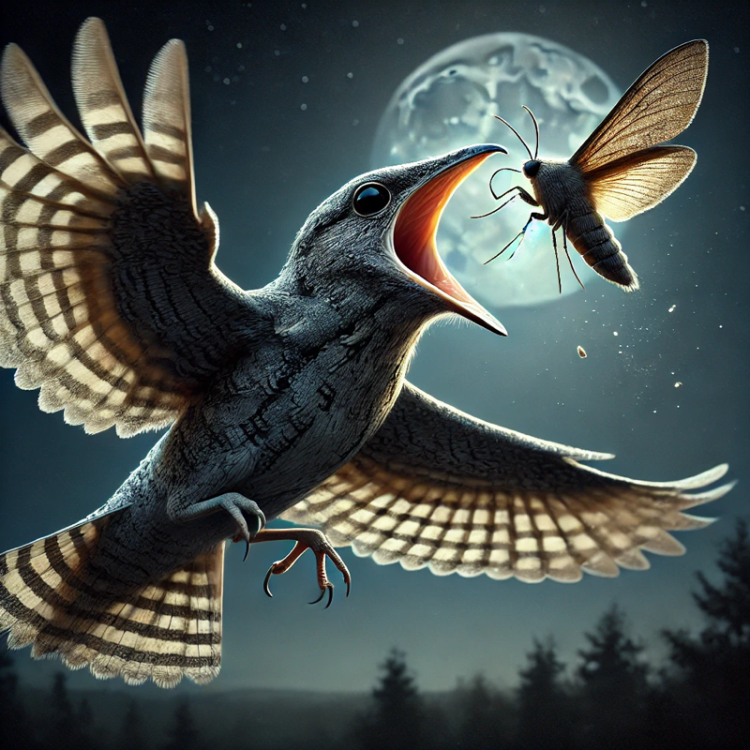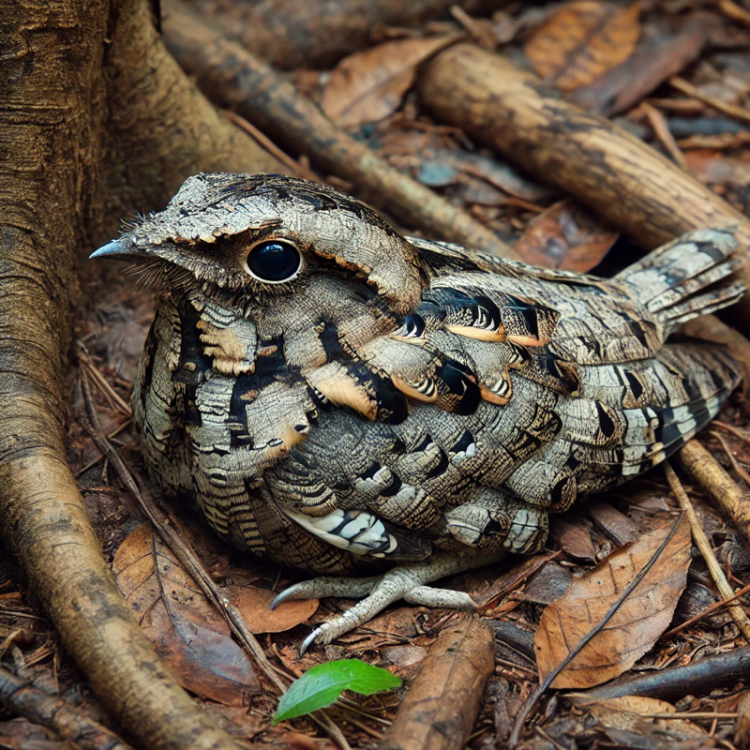The Mysterious Nightjar: Nature’s Nocturnal Navigator
As twilight descends and the world grows quiet, the nightjar emerges. Shrouded in mystery and often unseen, this remarkable bird occupies a unique niche in the natural world. Its cryptic plumage, nocturnal habits, and mesmerizing calls make it a true wonder of Jehovah’s creation.
The nightjar’s appearance is a testament to the ingenuity of camouflage. With mottled plumage in shades of brown, gray, and black, it blends seamlessly into its surroundings, often resembling tree bark or leaf litter. By day, the bird remains motionless on the ground or perched on a branch, virtually invisible to predators and passersby. This adaptation highlights the wisdom embedded in its design, enabling it to rest safely during daylight hours.
An Aerial Insect Hunter
As darkness falls, the nightjar takes to the skies, demonstrating its exceptional hunting abilities. Its wide mouth, bordered by stiff bristles, acts as an efficient insect trap, allowing it to feed on flying insects like moths and beetles. This feeding behavior has earned it colloquial names like “bugeater.” By controlling insect populations, the nightjar plays a vital role in maintaining ecological balance.
Global Presence and Habitat
Nightjars are found across the globe, inhabiting a variety of environments ranging from temperate to tropical regions. While absent from New Zealand and some Oceanic islands, they thrive in open landscapes such as heathlands, moorlands, and woodland clearings. In these habitats, they hunt during the twilight hours, their elusive nature making them more often heard than seen.
In the United States, nightjar species include the Eastern Whip-poor-will, Common Poorwill, Chuck-will’s-widow, and the Lesser Nighthawk, among others. Each species boasts distinct vocalizations, serving as a hallmark of their presence in the wild. The European nightjar (Caprimulgus europaeus), another well-known species, breeds across Europe and migrates to Africa for the winter, showcasing the extensive migratory patterns of this fascinating family of birds.
The Song of the Nightjar
One of the most enchanting aspects of the nightjar is its call. Often described as haunting, rhythmic, or melodic, these vocalizations are a defining characteristic of the bird’s twilight activities. Names like “Whip-poor-will” and “Chuck-will’s-widow” reflect their vocal patterns, which echo across their habitats and inspire wonder in those who listen.
A Testament to Jehovah’s Creativity
The nightjar’s cryptic beauty, nocturnal habits, and ecological role all point to the brilliance of Jehovah’s design. Psalm 104:24 reminds us, “How many your works are, O Jehovah! You have made all of them in wisdom. The earth is full of what you have made.” The nightjar, with its unique adaptations and important role in controlling insect populations, exemplifies the harmony and balance evident in creation.
Conservation and the Future
Despite their elusive nature, nightjars face threats from habitat loss and environmental changes. Protecting their habitats ensures these remarkable birds can continue their vital work and maintain their role in balancing ecosystems. Observing or hearing a nightjar is a rare and special experience, a reminder of the intricate wonders that fill our world.
The next time you hear the rhythmic call of a nightjar at dusk, take a moment to marvel at this nocturnal navigator—a small but significant glimpse into the ingenuity of life and the wisdom of its Creator.
Sources
• New World Translation of the Holy Scriptures, 2013 Revision
• Psalm 104:24
• “Nightjar,” Encyclopedia Britannica.
• “Nightjar Overview,” All About Birds.
• “European Nightjar,” Wikipedia.
• “Birds of North America: Nightjars,” Birds of North America.net.
• “How Nightjars Hunt and Thrive,” National Geographic.
Edited by dljbsp


0 Comments
Recommended Comments
There are no comments to display.
Join the conversation with your brothers and sisters!
You are posting as a guest. If you are already a member, sign in now to post with your existing account.
Note: Your post will require moderator approval before it will be visible.